

Ukraine

Jump to: Chernobyl
Jump to: Crimea
Jump to: Folk Architecture and Life Museum
Jump to: Kyiv
Jump to: Odessa
Jump to: Yalta
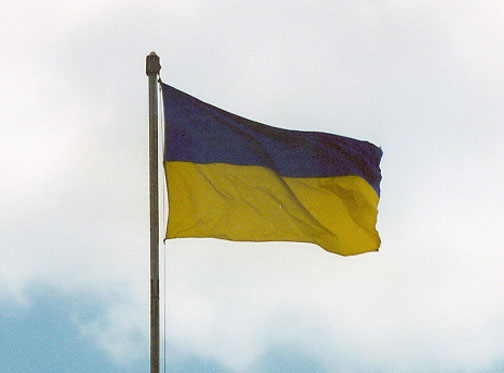
the flag
Ukraine (Ukrainian Ukraina), country in eastern Europe, and the second largest country in Europe after Russia. Ukraine is bordered on the west by Poland, Slovakia, and Hungary; on the southwest by Romania and Moldova; on the south by the Black Sea and Sea of Azov; on the east and northeast by Russia; and on the north by Belarus. The Crimean Autonomous Republic-encompassing the Crimean Peninsula, or Crimea, in the south-is included in Ukraine's borders. The capital and largest city is Kyiv (Kiev).

the country
Much of Ukraine is a fertile plain suited for agriculture. Ukraine is rich in
natural resources, and has a developed economy with significant agricultural and
industrial sectors. The country has a democratic form of government headed by a
president.
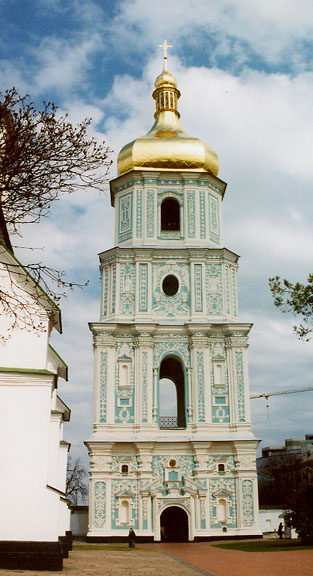
Bell tower of Saint Sophia cathedral in Kyiv
More Photos of the Saint Sophia frescoes
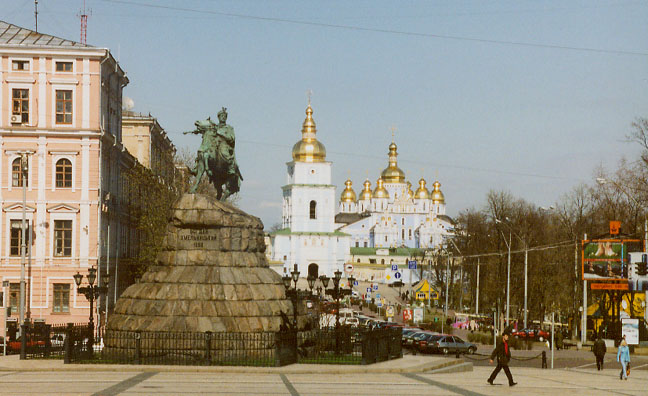
square in front of St. Michael Golden Domes Cathedral, Kyiv
From the 9th century AD northern Ukraine was part of Kievan Rus, the first
significant East Slavic state, which succumbed to the Mongol invasions of the
13th century. Ukraine was for centuries thereafter under the rule of a
succession of foreign powers, including Poland and the Russian Empire. In 1918 a
Bolshevik (Communist) government was established in Ukraine, and in 1922 the
Ukrainian Soviet Socialist Republic (SSR) was one of the four founding republics
of the Union of Soviet Socialist Republics (USSR). Ukraine's declaration of
independence, approved by a popular vote on December 1, 1991, was a major factor
in the USSR's collapse later that month.
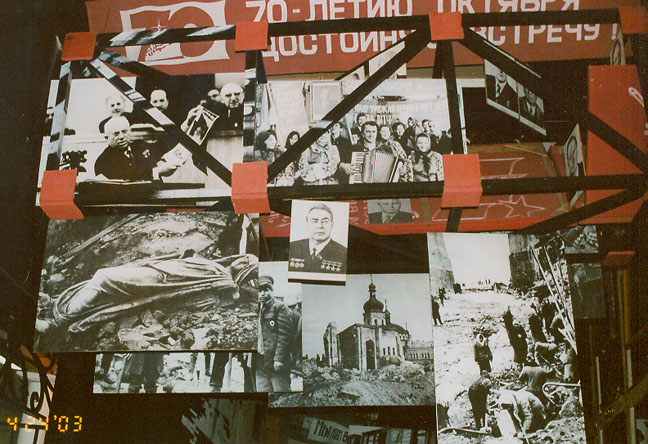
concerning the Chernobyl disaster
More Photos about the Chernobyl event
The population of Ukraine was estimated in 2000 at 49,506,779, giving the
country a population density of 82 persons per sq km (212 per sq mi). The most
notable recent demographic trend has been a decline in population-with an
estimated loss of nearly 1.2 million between 1990 and 1997-due to death rates
exceeding birth rates. Leading factors in the country's low fertility and high
mortality rates are environmental pollution, poor diet, widespread smoking and
alcoholism, and deteriorating medical care. Some 72 percent of the population
lives in cities and towns.
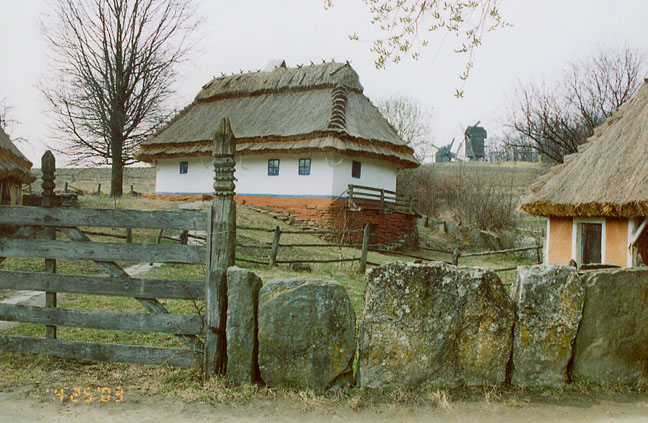
A Ukraine village scene
More Photos from the Folk Architecture and Life Museum
The largest cities in Ukraine are Kyiv, the country's capital and economic, cultural, and educational center; Kharkiv, noted for its engineering expertise, machinery plants, and educational institutions; Dnipropetrovs'k, a center of metallurgical and aerospace industries; and Donets'k, known for mining and metallurgy. Odesa (Odessa), on the Black Sea coast, is the country's largest seaport.
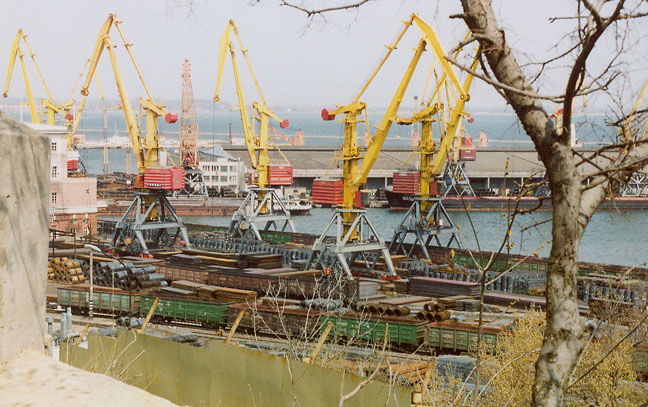
Odessa, shipyard on the Black Sea
During most of the Soviet period, the state imposed severe restrictions on
religious activity, banned many churches, and persecuted religious leaders. Many
believers, forced underground, continued to adhere to their faiths, however.
Religious activity remained relatively strong in Ukraine, and it has greatly
expanded since the collapse of the Soviet Union in 1991. A majority of the
population, or 67 percent, adheres to Eastern Orthodoxy through the Ukrainian
Orthodox Church or the Ukrainian Autocephalous (independent) Orthodox Church.
Until 1990 all of the country's Orthodox churches were part of the Ukrainian
exarchate, which was subsidiary to the patriarchate (jurisdiction of the
patriarch, or head) of the Russian Orthodox Church.
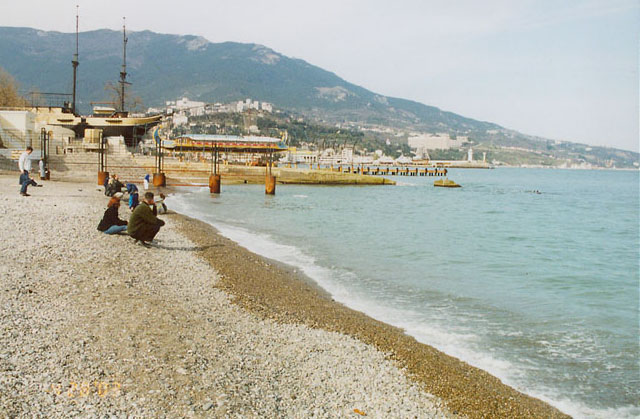
the Black Sea at Yalta
In 1992 the Ukrainian
Orthodox Church split into two rival denominations when the Kyivan patriarchate
was formed, separating itself from the Moscow patriarchate. The autocephalous
church, which was banned by the Soviet government in 1930, regained legal status
in 1990. Nearly 10 percent of the population, based almost exclusively in
western Ukraine, belongs to the Ukrainian Catholic (Uniate) Church, a church of
the Byzantine rite (see Eastern Rite Churches); banned in 1946, this church was
officially revived in 1991. Other denominations include Roman Catholics of the
Latin rite, Jews, Muslims, and Baptists.
Text from Microsoft Encarta
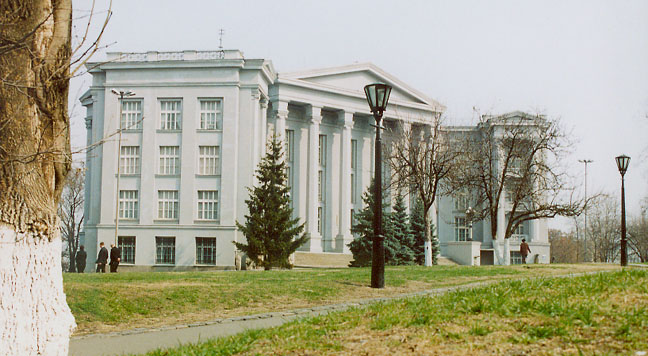
former Soviet buildings
(this one now a museum)
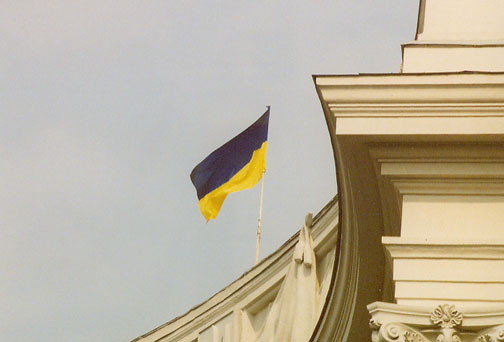
now flying the Ukraine flag

Motherland Monument

Exhibition of Economic Achievement
(a holdover from the Soviet days)
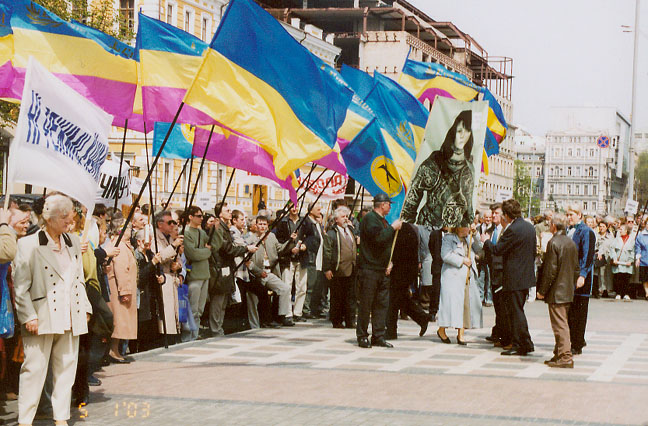
remembrances
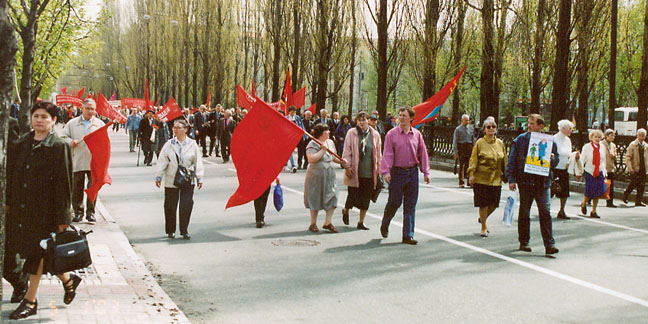
marching on May Day, 2003 in Kyiv
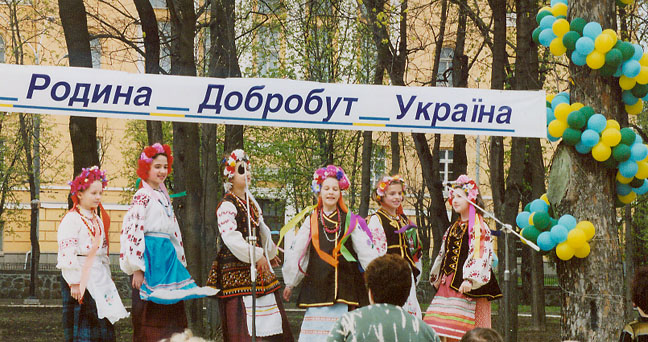
as well a folk singing

"Arizona" Cafe
![]()
![]()
![]()